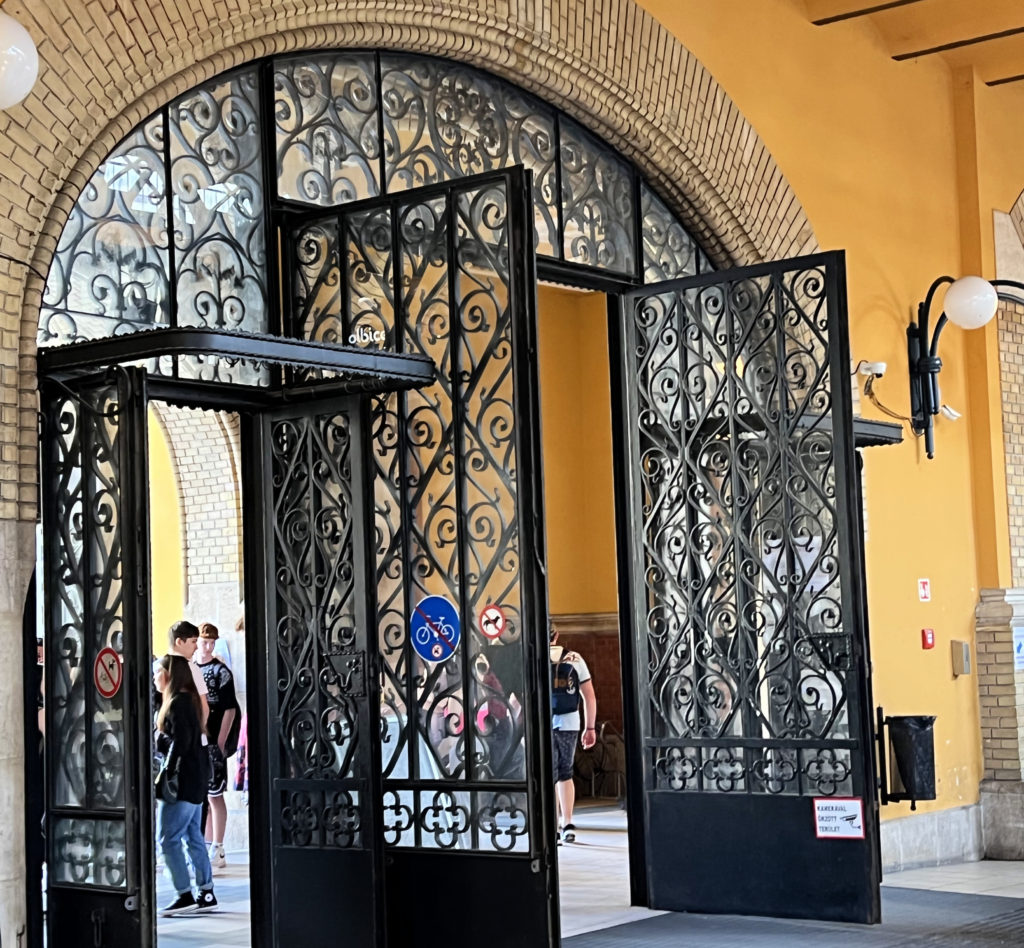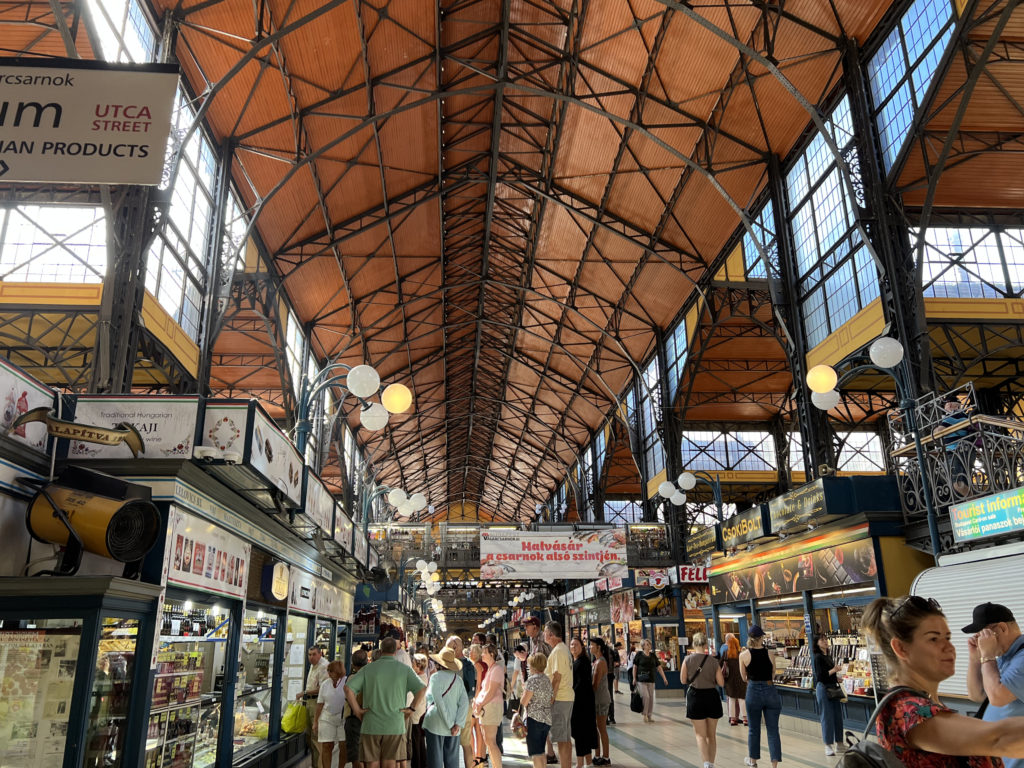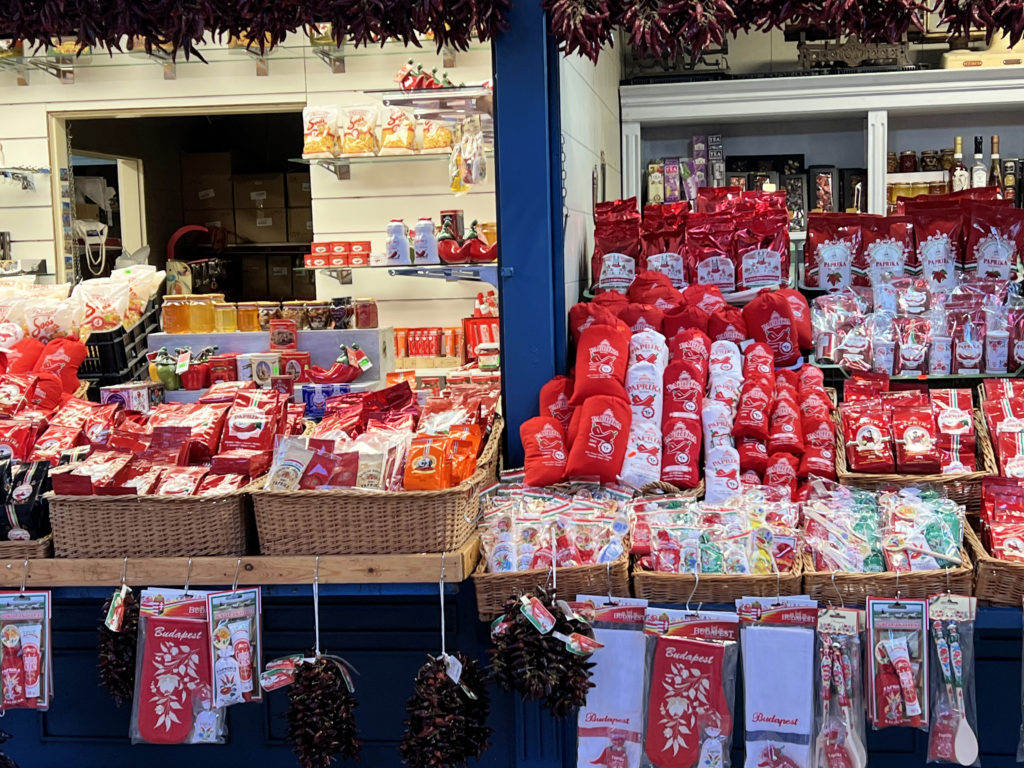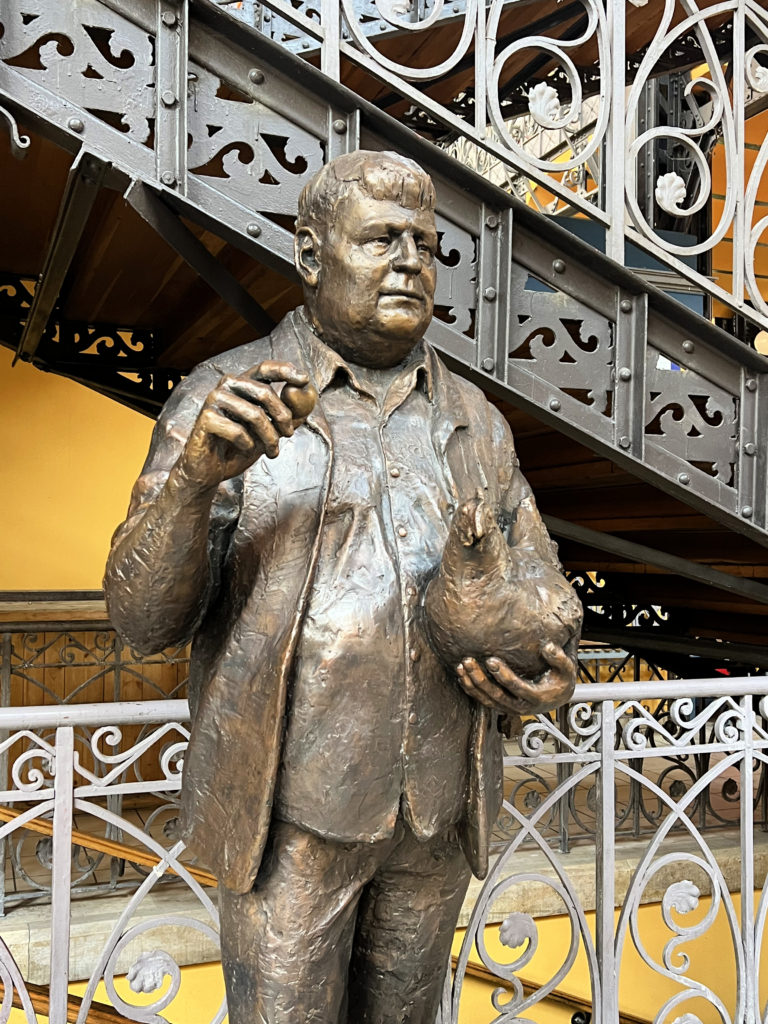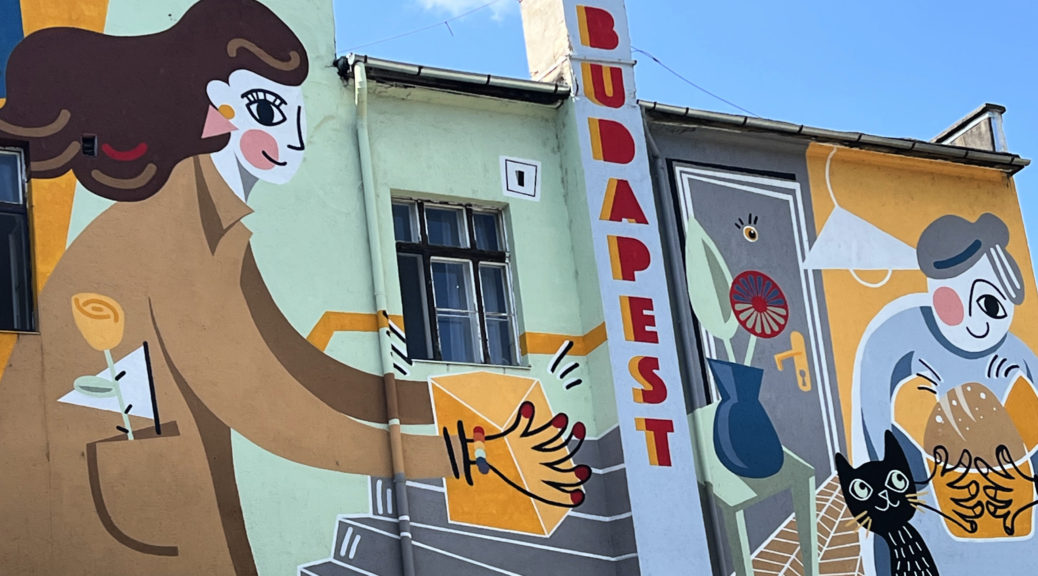
Discovering Budapest
After arriving in Budapest, we disembarked from the MS Joy. We spent several days in Budapest – it was one of our favorite cities. In future posts, I will focus on some of the wonderful places we visited. But in this post, I want to share some of what we found as we took walks in the city. I will start with the picture above the blog title. It is street art that was near our hotel.
The statue below, Liberty Monument, was one we saw before we even left the ship. Including the pedestal on which the figure stands, the monument is 46 feet high. It sits along the Danube on Gellért Hill. The statue was first erected after World War II and illustrates the complicated history Hungary had with the Soviet Union. The statue was originally erected to honor the Soviet Union’s liberation of Hungary, ending Hungary’s occupation by Nazi Germany. An inscription written in both Hungarian and Russia read, “To the memory of the liberating Soviet heroes [erected by] the grateful Hungarian people [in] 1945.”
But under Communist rule, the Hungarians turned against the Soviets. They attempted a revolution in 1956 but didn’t achieve democracy until 1989. The inscription praising the Soviets was removed and replaced by a new inscription (written only in Hungarian) which translates, “To the memory of all those who sacrificed their lives for the independence, freedom, and prosperity of Hungary.”
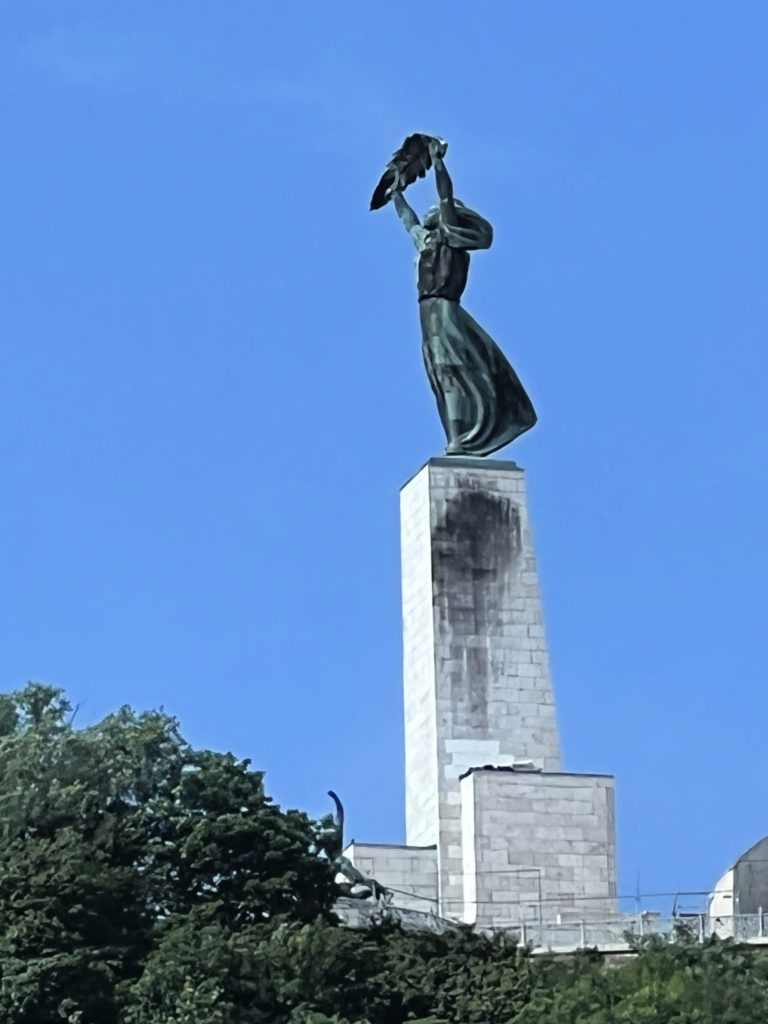
The first monument below recognizes the Red Army soldiers who died in 1944-45 during the liberation of Hungary from Nazi Germany. While many communist monuments and statues have been moved outside of Budapest to Memento Park, this one ironically stands in Freedom Square.
The monument is both an essential representation of the horrors of war, and a controversial subject for many Hungarians. On the one hand, it commemorates the fallen soldiers of the Soviet army, and on the other, it is a symbol of a regime, which continuously disregarded human rights.
https://historycampus.org/2017/controversy-of-the-monument/
The 16-foot monument is topped by a communist red star, a symbol banned in Hungary. While some Hungarians would like to see the monument removed, it is protected by a treaty with Russia. And if something happens to it, the Soviets have threatened economic sanctions.
The second memorial pictured is the Memorial to the Victims of the German Occupation in Budapest. The monument shows a German eagle over an innocent girl. For some, its message is straight-forward. When Nazi Germany occupied Hungary, life was very hard. This monument acknowledges this difficult time in Hungary’s history and memorializes the one million Hungarians who lost their lives under the Nazi regime. Those killed included over half of the Jewish population in Hungary.
But for others there is an underlying message – to them, the German eagle purports that only the Germans were to blame. But there were Hungarians who were members of the Arrow Cross Party, the party of the Hungarian Nazis, who assisted the Germans in torturing and killing the Hungarian Jews and stealing their wealth. They believe Hungarian Nazis also share the responsibility and blame for these atrocities.
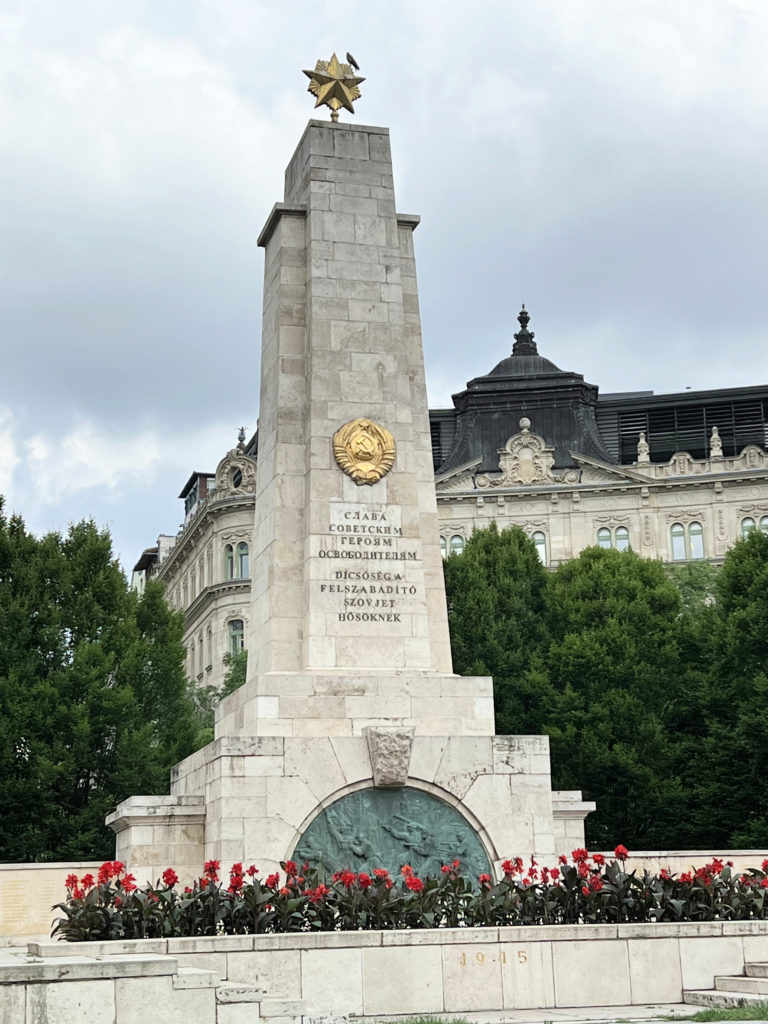
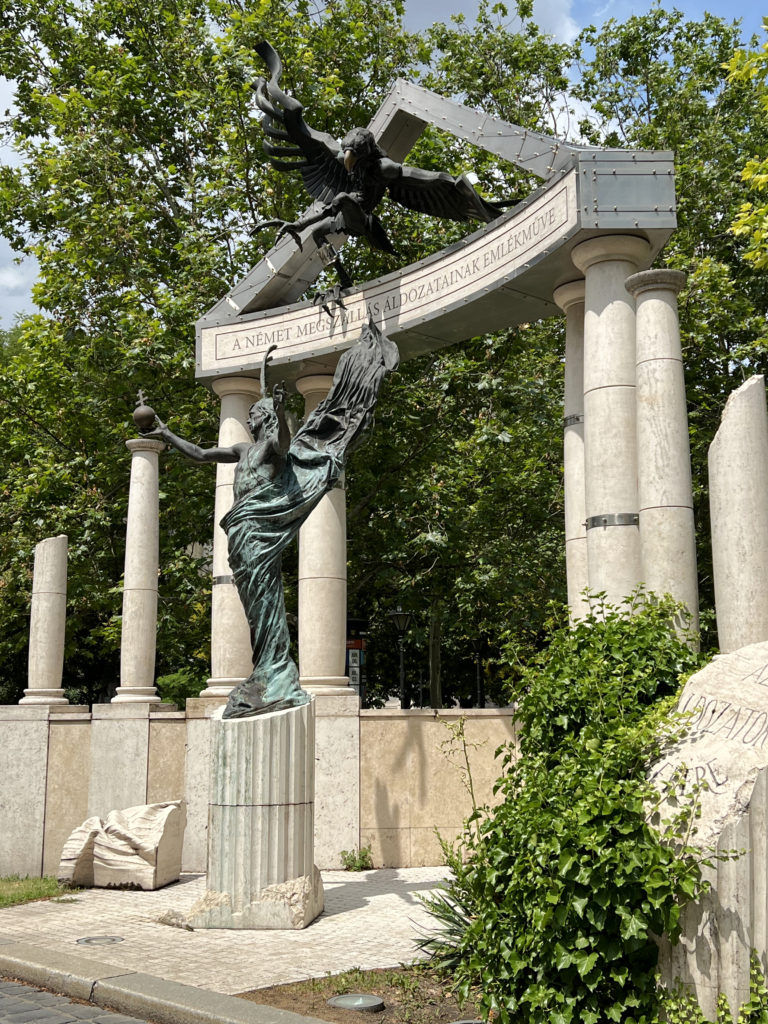
We saw other statues that didn’t hold the controversy of those above. The first statue below is a bronze statue erected in 2014. It portrays Roskovics Ignác, a famous Hungarian painter. We came across his statue as we walked along the Danube. He was born in what is now Slovakia but moved to Budapest where he was commissioned to paint murals and altarpieces for several churches and Stephens Hall in the Buda Castle.
The next statue pictured is the Mihály Vörösmarty Monument. A poet and dramatist, he was the first Hungarian author to make a living wage. He is recognized for making Hungarian literature “truly Hungarian” by making it national in language and spirit. The monument in his honor is from 1908. It is made of limestone while the figures are Carrara marble. Vörösmarty sits in the center surrounded by 20 other people. The people are parents, children, grandparents, workers – all representing different classes of people. At his feet are two lines of a patriotic song he wrote, Szózat. They read, “To your homeland without fail, Be faithful, O Hungarian!”
The last statue in this section is a bit more comical. The statue is named “The Fat Policeman.” He stands on a pedestrian square and watches tourists and locals walking around the neighborhood. Legend says that if you rub his belly you won’t gain weight so you can eat as much of the delicious Hungarian food as you would like.
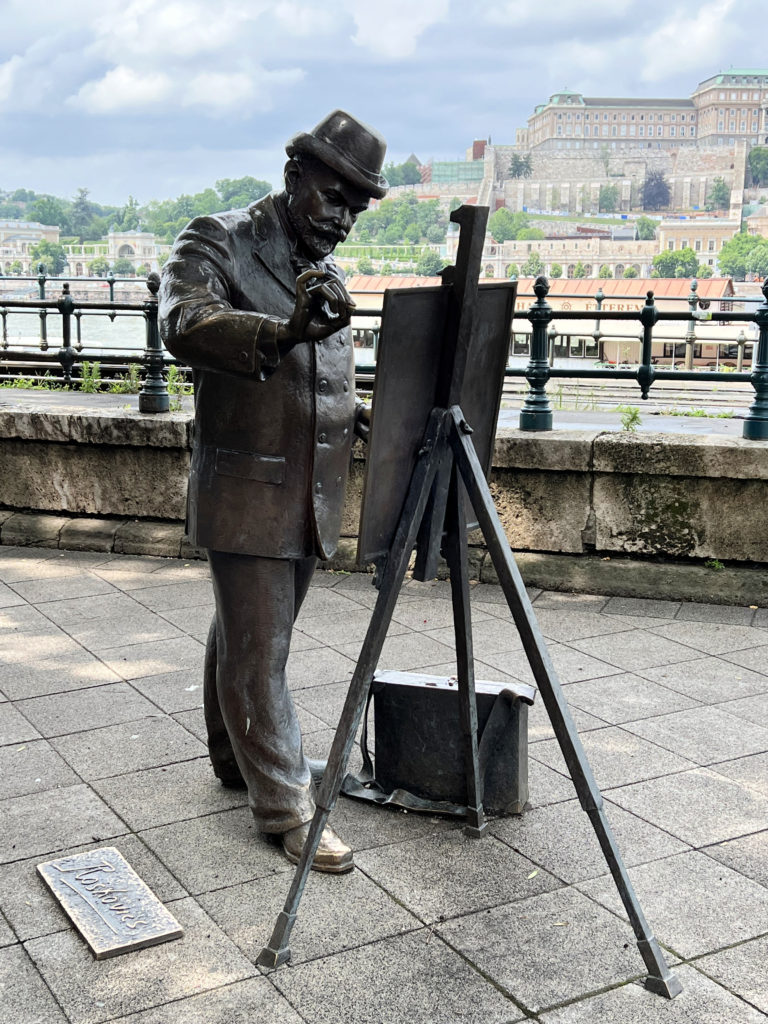

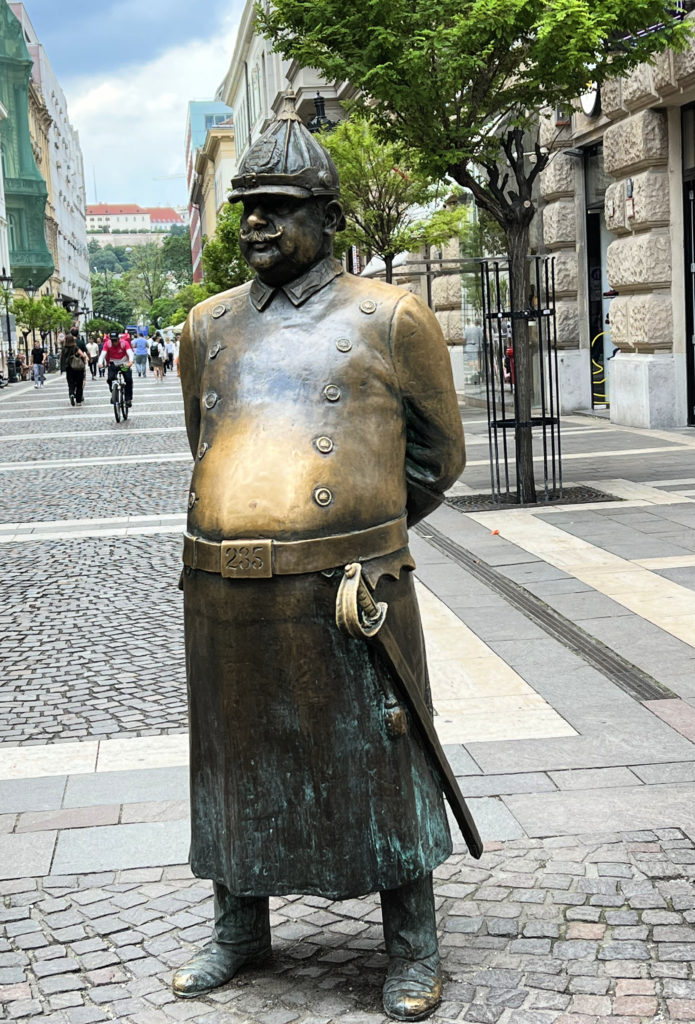
We also saw beautiful buildings. The first one below is the on the Buda side of the Danube and is the Buda Castle. The Hungarian National Gallery was established in 1957 in the part of the Castle facing the Danube. The Gallery serves as the national art museum and displays Hungarian works of art, most from the 19th and 20th Centuries.
The next picture is the Rudas Baths. In addition to its medicinal qualities, many baths are also of interest architecturally. The Rudas Baths were built between 1566 and 1572 by Turkish people who were occupying Buda at that time. The Turkish thermal pool which is the core of Rudas was named the fourth most beautiful bath in the world. The Rudas Baths were recently renovated with some interesting details discovered.
During the renovation, for example, original pink plaster parts were found. They were used by Turkish bath builders because they wanted to recreate the atmosphere of Istanbul’s red marble baths, but transporting the marble slabs was not an easy task, so they tended to achieve the desired effect with colored plaster.
https://www.spasbudapest.com/20191016-baths-and-architecture
The third picture is the Ethnographic Museum. As we were walking around the Hungarian Parliament, we discovered this building behind it. It was originally built for the Ministry of Justice but now houses the museum. The museum focuses on Hungarian culture, featuring exhibits that portray what everyday life was like from the late 18th Century to World War I. Exhibits include items like costumes, photographs, furniture and tools.
The last picture in this section is Liberty Bridge which crosses the Danube, connecting the Buda and Pest sides of Budapest. It was built for the Millennium World Exhibition in 1896 and originally named the Francis Joseph Bridge. The bridge was bombed at the end of World War II by retreating Germans. It reopened on August 20, 1946 as Liberty Bridge. The bird statues at the top of the bridge are turuls, similar to falcons. They were prominent in ancient Hungarian mythology.
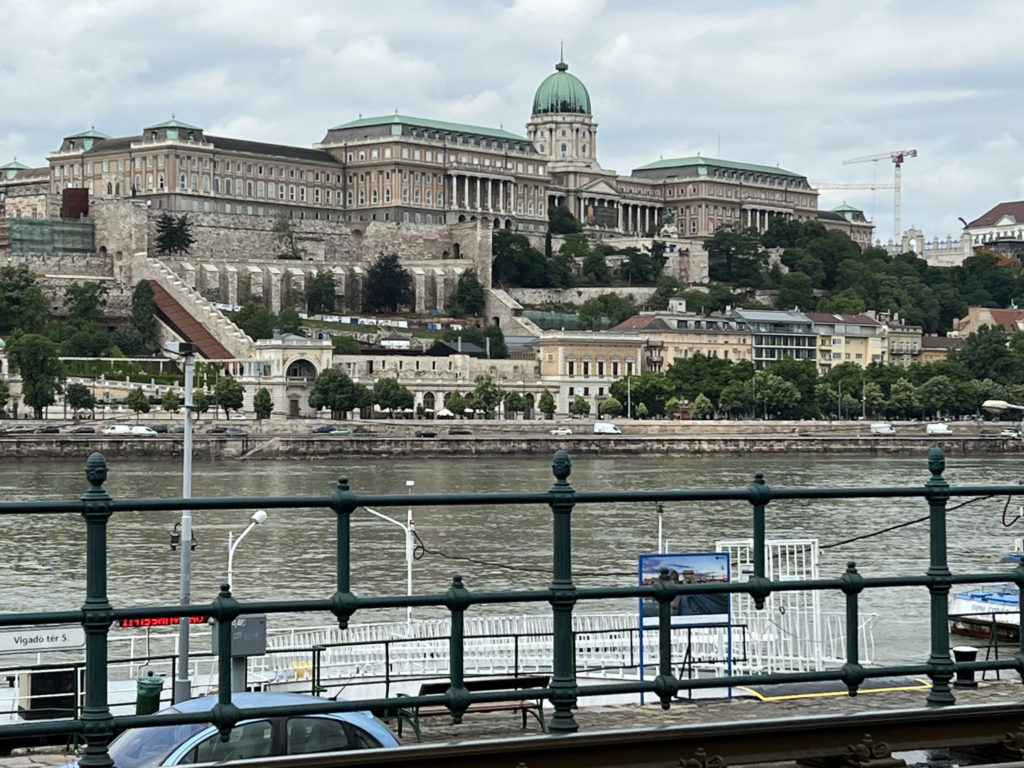

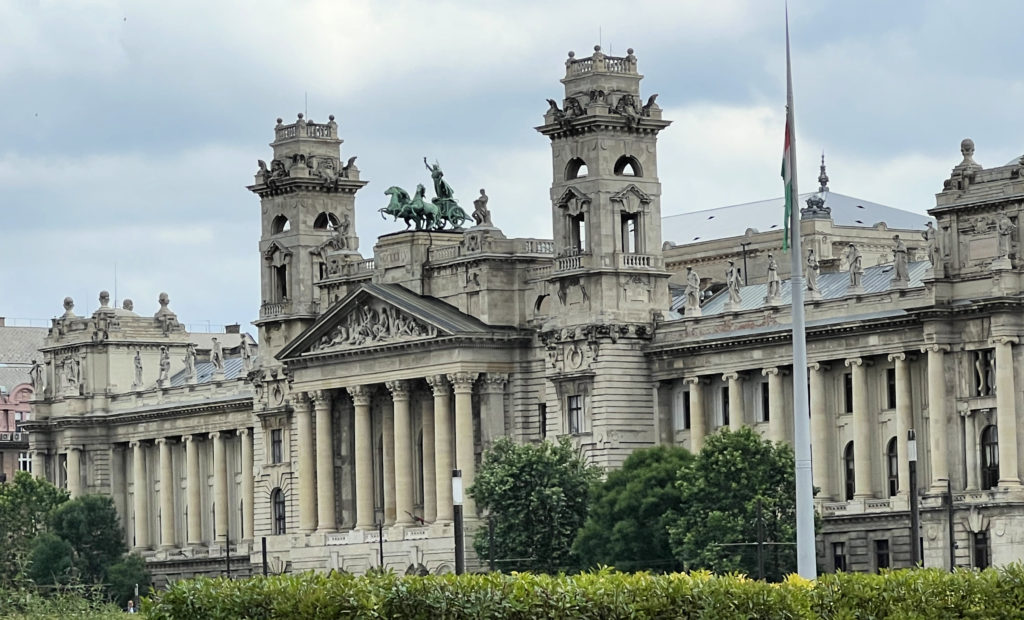
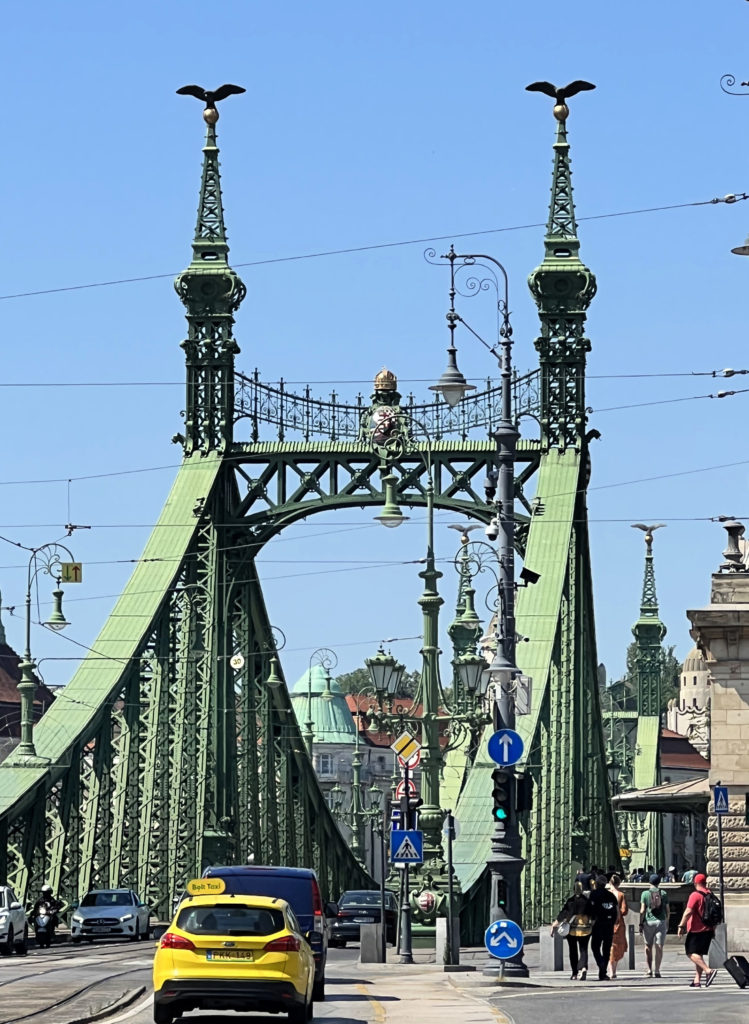
We visited the Great Market Hall. It is also known as the Central Market Hall. It is the oldest and also the largest indoor market in Budapest. Besides the Great Market Hall, there are four other indoor markets throughout Budapest.
At the end of the nineteenth century, indoor markets were founded in Hungary’s capital to guarantee the quality of the foodstuff and to improve their preservation as the citizens of Budapest were suffering from foodborne illnesses.
https://www.introducingbudapest.com/central-market-hall
It was originally built in 1897, but was destroyed during World War II. It was rebuilt, but in 1992 it went bankrupt. It was restored in 1995 and today is a popular tourist attraction and a favorite of locals as well. Inside, we found fresh fruits, vegetables, dairy products, salamis, fresh fish, Hungarian paprika, wines, and fine embroidery work. We bought an embroidery table runner, embroidery placemats and also paprika.
Below are pictures of the Great Market Hall facade, the iron entrance gates, a main aisle in the interior, the shop where we bought paprika, and a statue of a man holding a chicken – maybe he is on his way home with his purchase.

